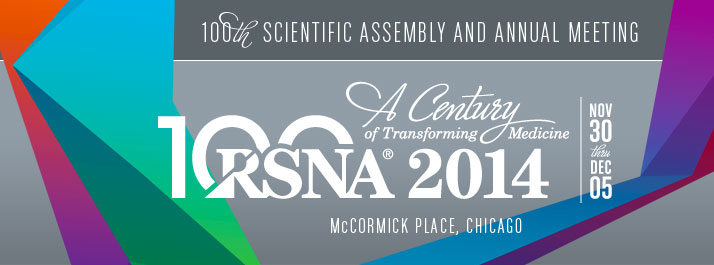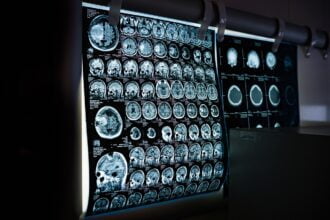 Throughout RSNA 2014, we have seen that the world of radiology is evolving. Beyond practices and legislation, technologies are expanding the way in which we collect, analyze, and share data.
Throughout RSNA 2014, we have seen that the world of radiology is evolving. Beyond practices and legislation, technologies are expanding the way in which we collect, analyze, and share data.
 Throughout RSNA 2014, we have seen that the world of radiology is evolving. Beyond practices and legislation, technologies are expanding the way in which we collect, analyze, and share data.
Throughout RSNA 2014, we have seen that the world of radiology is evolving. Beyond practices and legislation, technologies are expanding the way in which we collect, analyze, and share data.
In a poster presented today, Dr. Gelareh Sadigh shared the results of the study, “Traditional Text vs. Image and Interactive Data Embedded Multi-Media Enhanced Radiology Reporting: Referring Physicians’ Perceptions about Value.”
In addition to capturing radiologists’ reactions to using the multimedia reports, Dr. Sadigh, Dr. Rich Duszak, and the team at Emory University also looked at referring physicians’ perceptions about value in radiology received within the reports.
When exploring referring physicians satisfaction, the study looked at the opinions of medical oncologists, radiology oncologists, pulmonologists, and neurosurgeons in the United States. All of those participating in the study had more than two years of experience in the field and were referring more than 10 patients per week. The end results yielded 200 survey responses, with 46 years being mean age, and the gender demographic being 85% male. In regards to receiving paper versus electronic reports, a majority were receiving their reports electronically, with another majority receiving their reports as text only versus reports with both text and images.
The results of the study, which used Carestream’s Vue Reporting to create the multimedia reports, found that 80% reported an increase in referral probability when including text and images. Also, while 80% were satisfied with the current format of radiology reports, satisfaction was significantly higher in reports with combined text and images vs. text only reports.
Compared to historically text-only reports, the multimedia ones included hyperlinks, graphs, viewing relevant comparisons images, data and key images. When using the multimedia reports, the interpreted value included an improved understanding of findings by correlating images to text reports. The multimedia reports also provided easier access to images while monitoring progression of a condition, and saved time trying to understand findings without supporting images.
Like all studies, this one was not without concerns. Out of all respondents, 28% responded having concerns. The most common ones were that the multimedia reports were too time intensive because of all of the information within them. In some facilities, clinic workflow does not allow itself to view reports with such a high volume of information.
But in the end, when it came down to enhancing value for radiology, 80% indicated an increased likelihood of preferentially referring patients to facilities that offer MERR, 79% indicated an increased likelihood recommending peers use facilities offering MERR, and respondents also said they were much more likely to give the reports to patients to enhance education. Overall, respondants saw multimedia reports as being a big improvement over text-only versions because of the value of information and detail offered within.







